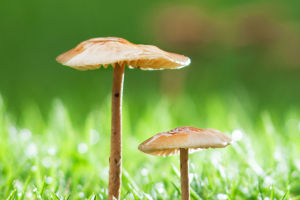Basil is a common herb plant belonging to the Lamiaceae plant. Native to Indonesia and the Indian subcontinent, it is now widely cultivated around the world.
Widely used in cooking and medicine. It is especially popular in Asian dishes, adding a fresh and aromatic flavor to dishes.
1. Plant Characteristics:
Basil is a perennial herb with a height of about 30 to 60 cm. It has erect stems and opposite dark green leaves that are oval or ovate with smooth surfaces and slightly serrated edges. The leaves emit a strong aromatic odor.
2. Flavors and Uses:
Basil is famous for its unique aroma and taste. It has a tangy sweet and slightly savory flavor, with a hint of pepper and a hint of licorice. This makes it an important condiment for many dishes, especially widely used in Asian cooking. It is often used in Thai, Vietnamese, Indian, and Italian dishes, among others.
3. Nutritional value:
Basil is rich in vitamin K, vitamin A, and vitamin C. It's also rich in antioxidants like rosmarinic acid and quercetin, which have anti-inflammatory and antibacterial properties. In addition, basil also contains a variety of minerals and fibers, which are good for health.
4. Medicinal value:
In addition to being a condiment, basil is also widely used in traditional herbal medicine. It is thought to have sedative, antipyretic, antibacterial, and antioxidant properties. Basil leaves can be made into tea for indigestion, respiratory problems, and stress.
5. Cultivation and harvesting:
Basil is an easy-to-cultivate plant that thrives in full sun. It can be grown in the garden, in a pot, or indoors on a windowsill. Basil leaves can be picked after the plants have grown to a certain height while retaining enough leaves for the plants to continue growing.
6. Variations and varieties:
There are many different variations and varieties of basil, each with a slightly different look and taste. Some varieties have purple leaves, such as Purple Basil, while others have a lemon scent, such as Lemon Basil.
7. History and Culture:
basil has an important place in many cultures. In India, it is considered a sacred plant and is often used in religious ceremonies and celebrations. Elsewhere, the basilica is also associated with love, friendship, and happiness.
Generally speaking, basil is a herb plant with a strong aroma and unique taste. Playing important roles in culinary, medicinal, and cultural traditions, it is a beloved and widely used plant.
Basil is a common herb that is widely used in cooking. Here are some common ways to eat basil:
1. Raw food: Fresh basil leaves can be eaten raw after washing, as an ingredient in salads. The fragrance and unique taste of Basil can add deliciousness to dishes.
2. Seasoning: Chopped basil leaves can be added to soups, sauces, dressings, or oils to add aroma and flavor.
3. Sauces and dips: mix basil leaves with minced garlic, chili, fish sauce, lemon juice, etc. to make sauces or dips, which are used for dipping vegetables, seafood, meat, and other foods.
4. Heating during cooking: The basil can also be used for heating during cooking. Add it to stir-fries, stews, soups, and other dishes, the aroma and flavor will be released during the cooking process, adding a unique flavor to the dishes.
5. Steaming: Put basil leaves on steamed food, such as fish, shrimp, or vegetables, and the aroma of the basil will penetrate the food after steaming, enhancing the taste and taste.
It should be noted that the taste of basil is quite special and different from other herbs, so it needs to be used in moderation to avoid overwhelming the taste of other ingredients. Additionally, basil is often used before or at the last moment of cooking to preserve its aroma and flavor.
Overall, basil is a versatile herb that can add a unique aroma and taste to a variety of dishes. You can flexibly use the basil in cooking according to your preferences and creativity, and explore the food that suits your taste.


